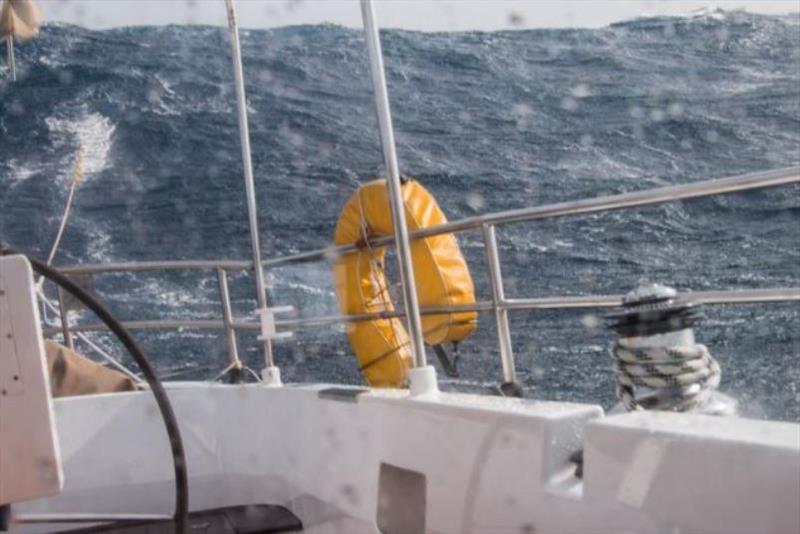
Best practices in deployment of the Jordan Series Drogue
by Stephen Brown 1 Apr 2021 14:49 UTC

Best practices in deployment of the Jordan Series Drogue © Ocean Cruising Club
Experienced blue water sailors share their knowledge of how and when to deploy the drogue to ensure the safety of vessel and crew under challenging conditions.
The Jordan Series Drogue has proven to be a lifesaver on many occasions and research recently undertaken by OCC member Steve Brown has drawn on the real life experiences from a number of very experienced sailors including no less than four CCA Blue Water Medallists.
The Best Practices Guide is available on the OCC Forum but the key points from this research are that if the fear factor is removed and the methodology for use is simple and understood, then the skipper is more likely to launch the drogue before there is real danger to the boat and its crew.
- Understand the principles behind the drogue's design and use.
- Err on the side of caution when calculating the number of cones and length of lead line between the bridle and first cone.
- Earlier JSD's used a lighter weight material for the cones and many failed resulting in higher boat speeds, later drogues and kits use heavier weight material
- Ensure the end weight is sufficient to keep the JSD below the surface at all times.
- Ensure that the anchor points for the bridle are strong enough to withstand the forces exerted in extreme conditions and if in doubt re-enforce them. (You should be able to hang your boat off them)
- Any shackles used should be moused to stop them coming undone.
- All eye splices should have stainless steel thimbles to stop chafe.
- If possible, prepare the drogue before leaving port with the bridles in place and secured to stop accidental launching with the drogue flaked into a firmly secured launch bag and the chain attached.
- Eliminate ALL possible chafe points and add extra chafe protection where necessary, many skippers fabricate extension plates to move the anchor point aft of the stern.
- If using a self-steering system consider the possibility of the bridle fouling the structure.
- Have a bridle retrieval line with clove hitch / prusik knot set up to make retrieval quick and easy.
- Practice launch and retrieval techniques with all crew
- Do not wait until conditions become too extreme and unsafe to be on deck before launching the drogue.
- Use the largest winch on board for recovery and if possible, hand tail the drogue on the winch waiting for slack on the line to make maximum progress with least effort.
More information here.
This article has been provided by the courtesy of Ocean Cruising Club.